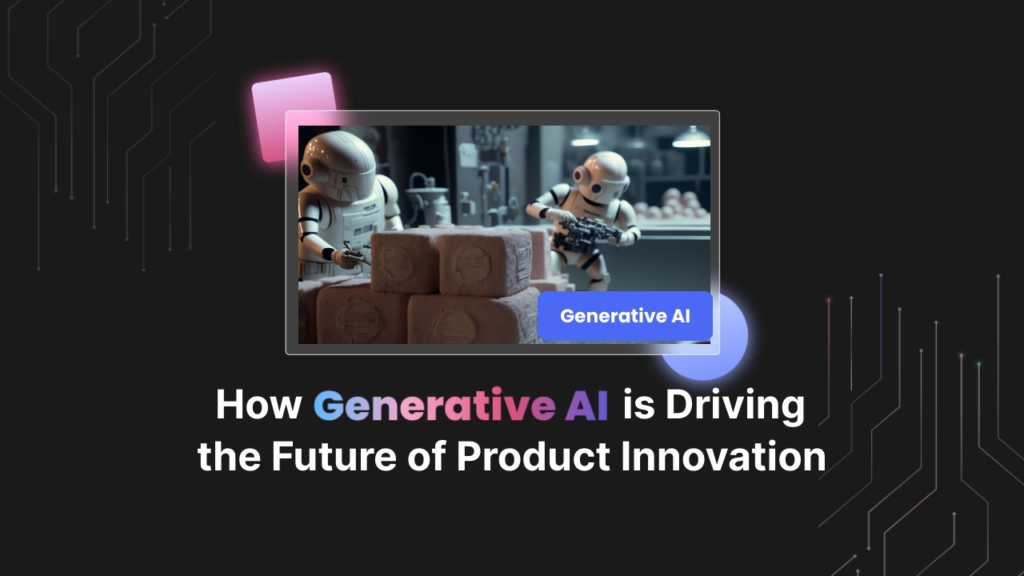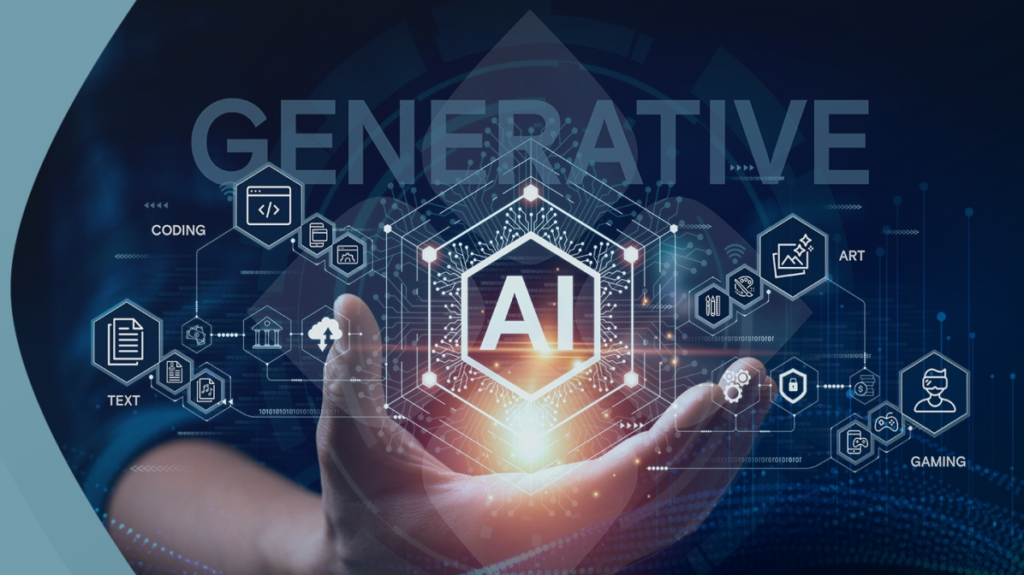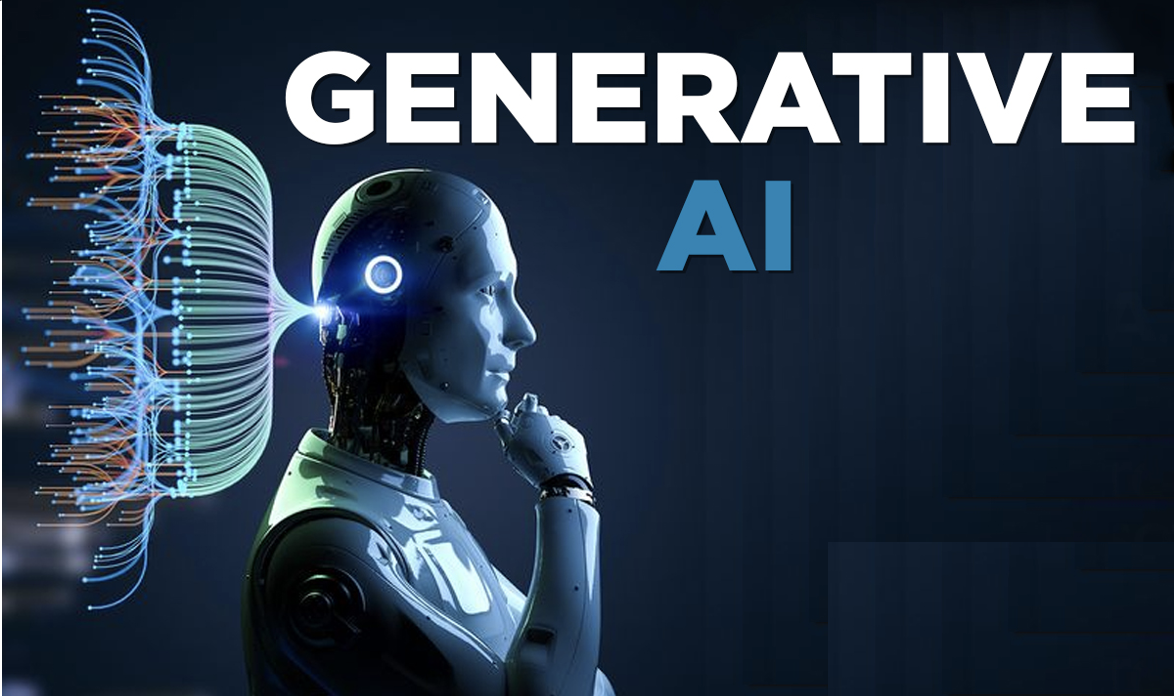Generative AI is reshaping the business world one innovative idea at a time. As businesses navigate the demands of the digital era, this technology stands out for its capacity to produce content that parallels human creativity. From producing mesmerizing artworks to conceptualizing robust architectural designs, generative AI acts as a catalyst for innovation. Embracing this technology allows organizations to surpass traditional boundaries, setting new benchmarks within their respective industries.

Introduction: What is Generative AI?
At its core, generative AI encompasses systems that can create new data mimicking human-like outputs, including text, visuals, and audio. As enterprises strive to maintain their competitive edge, understanding generative AI and its underlying potential becomes essential. These systems utilize complex algorithms and neural networks to analyze vast datasets, identifying intricate patterns and producing innovative content. By facilitating the generation of new ideas and designs, generative AI plays a crucial role in enhancing the creative processes of multiple industries, providing a fertile ground for novel innovation. Its ability to iterate rapidly on creative concepts reduces the need for human effort in the initial stages, thus freeing up skilled professionals to focus on refining and finalizing designs.
The Rise of Generative AI in Business
The rapid advancement of AI technologies over the last decade has paved the way for the emergence of generative AI. Initially, businesses experimented with AI for simple tasks like data sorting and customer service automation. However, as AI technologies matured, particularly generative AI, their role expanded beyond administrative processes and creative domains. Recent statistics suggest a significant uptick in AI adoption, with over 37% of businesses integrating some form of AI into their operations. This trend highlights its transformative impact, offering businesses efficiency and creativity. Forbes provides further insights into how AI alters business paradigms and drives enterprises toward a digitally-inclined future.
Real-Life Applications in Enterprises
Generative AI serves a broad spectrum of applications across various industries. In fashion, AI-driven design tools enable the creation of unique attire that aligns with contemporary trends. In architecture, generative AI assists urban planning, offering sustainable and efficient solutions by simulating diverse environmental scenarios. The entertainment industry also benefits greatly; AI writes scripts, composes music, and even aids in producing digital animations. These applications demonstrate how generative AI transcends traditional creative boundaries, providing new dimensions to problem-solving and innovation within an organizational context. Furthermore, generative AI is beginning to suggest novel recipes that incorporate flavor profiles suited to current dietary trends in the culinary world, proving that its potential extends into even the sensory realms.

Advantages of Implementing Generative AI
The strategic advantage of generative AI lies in its potential to cut operational costs while boosting innovation significantly. By employing AI, businesses can swiftly generate creative solutions tailored to individual needs, foster personalized customer engagement strategies, and seamlessly scale their operations to meet market demands. In a study conducted by the Harvard Business Review, organizations that harness AI have reported a marked increase in productivity and market responsiveness, solidifying AI’s role as a game-changer in achieving sustainability and growth objectives. Moreover, AI-driven insights enable teams to make data-backed decisions confidently, enhancing strategic alignment across various departments and fostering a culture of informed innovation.
Challenges and Considerations
While the prospects of generative AI are promising, it is not devoid of challenges. Data security remains a significant concern, particularly when AI systems have access to sensitive corporate information. Moreover, ethical dilemmas related to bias in AI outputs must be addressed. As AI generates content autonomously, the risk of misinformation and maintaining transparency and accountability in AI systems are more crucial than ever. Enterprises must develop robust strategies to combat these challenges, ensuring responsible AI adoption and deployment. An approach involving continuous monitoring and validation of AI-generated content can address these issues effectively, reducing risks and fostering stakeholder trust.
Future Trends and Predictions
Looking ahead, the trajectory of generative AI indicates a promising future. As technology continues to evolve, its integration with fields such as healthcare and finance might revolutionize these industries. Generative AI holds the potential to enhance diagnostic precision in medicine and streamline financial product development by generating highly accurate predictive models. As suggested by experts, the convergence of generative AI with other cutting-edge technologies, like Blockchain and Augmented Reality, will likely unlock new avenues for business innovation and operational efficiency. This synergy offers new product and service capabilities and enables businesses to create immersive experiences that can redefine customer engagement and brand loyalty.

How to Get Started with Generative AI
The initial steps for enterprises eager to harness generative AI involve assessing their current capabilities and infrastructure. Understanding organizational requirements and investing in essential resources and skill development is crucial. Engaging with AI specialists and participating in industry conferences and workshops can provide valuable insights. Enterprises should prioritize starting with small-scale projects to test AI’s impact and learn and adjust strategies before rolling out large-scale implementations, thus ensuring a smoother transition and maximizing potential benefits. Fostering a cross-functional team that includes AI, marketing, and product development specialists can foster innovative thinking and enhance the overall implementation strategy.
Conclusion: The Road Ahead
As generative AI evolves, its role in business transformations becomes even more significant. Organizations must strike a balance between leveraging technological advancements and addressing ethical issues that arise. By embracing generative AI responsibly, businesses can use its capabilities as a powerful means for distinction, innovation, and sustained growth. Human and machine intelligence interplay will undoubtedly bring forth exciting opportunities, framing a futuristic landscape where creativity and machine cognition coexist harmoniously. Enterprising leaders who embrace this technology with a forward-looking vision can pave the way for their organizations to become participants and leaders in the next wave of the digital revolution.

